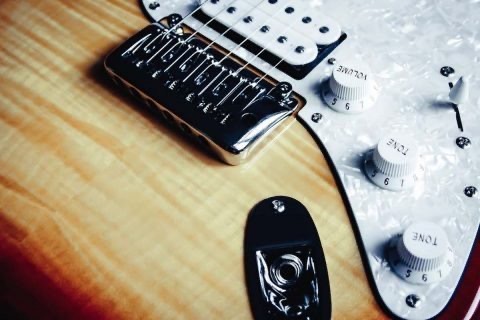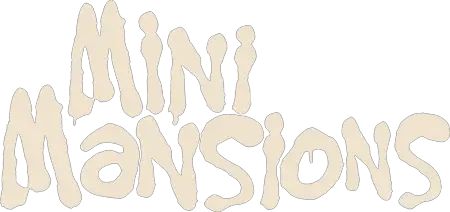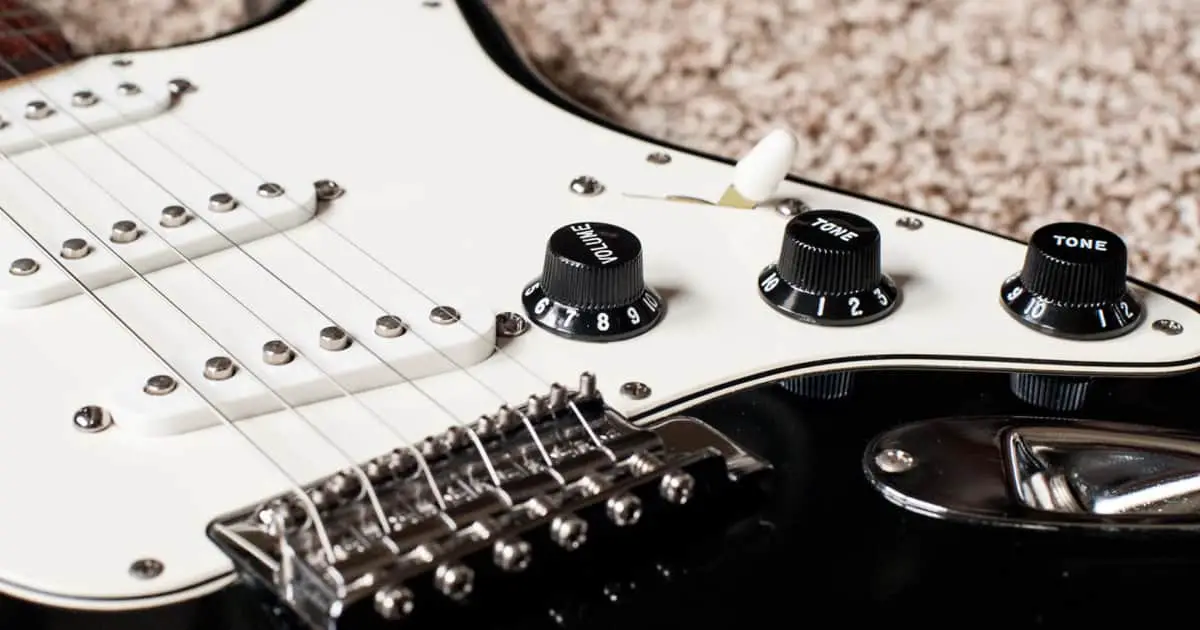To the novice, music appears to be a befuddling universe with its perplexing language. It’s relatively straightforward if you know a few names or functions for the sections of an instrument you’re playing, such as guitar parts because you might not immediately realize the answer to the question: what are the knobs on a guitar?
The sound of a guitar has controls similar to those on a stereo system. Volume and timbre (bass, treble, and sometimes mids) are controlled via buttons called guitar knobs. Here’s a little instruction that we had researched about guitar knobs to help you better understand what it is, and maybe this basic information can help you play better. Please continue reading.
Table of Contents
What Are The Knobs On A Guitar?
The electric guitar may be the most important and popular instrument in American music over the last half-century. Its release undoubtedly marked a dramatic shift in American musical technology, influencing the sound and direction of modern musical styles.
On the market, there are tens of thousands of different guitar types for you to select. However, there are four basic designs. As previously stated, the knobs regulate the pickup, volume, and tone, and there are four different setups to collect.

- Common Styles Of Guitar Knobs
Bell, speed and domed are the three most distinctive tone and volume knobs. Different brands of guitars appear to favor one sort of knob over another.
Bell knobs
The most well-known bell knobs come first. Hat, bell hat, UFO, and hut knobs are some of the other names for these. You can find it easily on LP and strat guitars. Clear knobs with the color and numbers painted underneath are typical on Les Paul guitars. Gold and black are the most popular options. Amber knobs are made of translucent amber acrylic with a gold finish. The numbers and volume/tone imprinted on the outside of the Strat bell knobs are solid colors.
Speed knobs
Exercising the speed knobs, also known as barrel knobs, enables easy and quick control adjustment. The diameter is similar to a bell knob’s bottom skirt, but it does not taper inwards. The color and numbers are usually painted on top of clear plastic. Because the plastic is thicker and the numbers are difficult to read, the amber version of these knobs seems darker than the bell version.
Domed knobs
The domed knobs are the last knobs’ style of the list. They aren’t usually in domed shape and might have flat tops as well. Metal or plastic are usual materials to construct them.
The sides are typically knurled, with a fine to coarse texture. This can be found on many Telecaster guitars, but it’s trendy on Super Stratocasters such as Ibanez, Charvel, Jackson, etc. The guitar will have a sleek look with a domed knob.
Knob with or without recess
The two most common crown shapes for basic guitars are concave and non-concave knobs.
When choosing a knob for a guitar, another factor to consider is if you want a classic-style non-concave knob. This type of knob will make it appear as if the knobs are not fully pressed in. They can be anywhere from 1/8 ′ to 1/4 ′ on the body of the instrument.
These can be found on many of the old Gibson guitars and the company’s historic line of guitars. On some guitars, the knob may appear too high, and the control may need to be lowered to improve appearance.
On some guitars, such as Gibson’s PCB-equipped models, this can be problematic. With the non-concave buttons installed, here are some examples of the Historic Gibson and the 2010 Traditional Gibson.
- Frequent Guitar Knobs Configuration
An electric guitar’s timbre and tonal character can be changed in several ways. A variety of pickups, stompbox pedals, amplifier functions, and tone and volume knobs on the instrument can all lead to a diversified sound.
Depending on the brand of guitar and its setup, the volume and tone controls can take a variety of forms. Isolated controller and master controller are two of the most frequent configurations. Both systems offer advantages and disadvantages, but it comes down to the personal preference of the guitarists.

The Master Controller
The most popular type is the master controller, which you may have seen on Les Paul guitars. It is accomplished by using a single knob to regulate the settings for both pickup positions simultaneously. With just one dial, the identical output is sent to each pickup.
Too many knobs might be unsightly and cluttered guitar bodies. Thus it better improve to a more straightforward arrangement. With only one volume knob and one tone knob, having a master controller makes controlling the guitar tone a little easier. When switching through my pickups, you should always have your guitar tone and volume full if you want to get the best result.
The Isolated Controller
LERIt should be advocated as a volume/tone knob for each pickup if you needed to isolate each pickup in the future. It means you can customize your tone and volume settings separately, which means you won’t have to continue tweaking them when you switch between pickups.
You might have a setup where each pickup has its control. Two volume knobs, two tone knobs, and a single switch are commonly included in this pickup set.
- Types Of Knobs Installations
Installation With Four Knobs
A four-knob arrangement typically consists of one tone and one volume knob for each pickup, with two volume controls and two tone controls, one set for each pickup, totaling four knobs.
The three-way selector allows you to select either the bridge pickup with its volume and tone settings, the neck pickup with its volume and tone settings, or both pickups with all four locations controlling tone, sound, and volume. The neck pickup’s volume is controlled by the top knob closest to the bridge, while the knob behind it governs its style. The bridge pickup volume is controlled by the bottom knob, which is described as “below neck volume,” and the knob behind that controls the tone.
Installation With Three Knobs

A three-knob configuration can vary depending on the manufacturer you choose. For a dean and flying, they normally have two volume knobs to adjust the volume output of each pickup, and one tone control to switch the bridge and neck pickups at the same time.
In the Fender three-knob layout, there are two-tone knobs. This will include controlling one tone knob for the neck pickup and another for the middle and bridge pickups. All three pickups are controlled by a single volume knob.
Installation With Two Knobs
One volume and one tone knob are used to control both pickups in a two-knob arrangement. On guitarists, this is a common sight. This arrangement is popular among users because it is straightforward and easy to understand for a novice.
The advantage of having two tone controls is that you can roll down the upper tone control if you’re only using the neck pickup and want to make it sound mellower.
When you want to make your middle pickup sound more mellow, do the same thing.
When the pickup selector is set to position 4, both the neck and center pickups are enabled. You may also utilize tone controls. You may, for example, merely lessen the sharpness of the middle pickup while keeping the treble at its highest setting on the neck pickup.
It essentially expands your options.
Because the pickups are linked to the tone controls, there is no tone control on the bridge pickup. However, rewiring your instrument to use the tone controls on the bridge pickup instead is conceivable. If you wish to accomplish this, take your guitar to a skilled technician who can examine it and make the necessary changes.
Installation With Push-pull Knobs
The operation of a push-pull knob differs from that of other controls. This work will allow access to a new setting by pulling or pushing the knob, and then the various stages may be used to change the designated place.
Some guitars, for example, include a knob that can be turned to toggle between humbucker and single-coil pickups. Some guitars, like the Fender S1 switching mechanism, change as you pull the selector. The tone can be changed at the pull position, while the loudness may be changed in the push position.
- Shafts Types For Knobs Control
When it comes to guitar knobs, it’s not just about choosing a style you like. It all comes down to whether or not it will suit your guitar or bass properly. A solid shaft or a splined split shaft known as a knurled shaft are both options for your control.
Split shaft knobs come in two sizes, both 6mm in diameter and differ only in the number of splines on the shaft.
Control knob with fine spline
Import potentiometers have either a coarse or fine spline, which is typically shortened as “pots.” Almost every press-on knob made for rough 18-spline pot shafts will not fit fine 24-spline pot shafts and vice versa.
Never pinch the control shaft with pliers when fitting a knob. As a result, the divided post could crack.
Control knob with coarse spline
A coarse spline knob has a total of 18 splines if you count them all. There are eight on every aspect of it in the pot if you trust them (16 total).
There are ten splines on each split side, while fine spline knobs have 24. (20 total).
Counting the control splines is more accessible than depending on the knob splines.
The universal knob control
Some span knobs are standardized, which means they work both with coarse and fine spline pots. These knobs haven’t had splines and are simply the suitable diameter to match the splines on the bank.
Solid shaft with a domed knob
The majority of dome knobs are secured with a set screw. The shafts come in two sizes: 6mm and 1/4′′.
An imported guitar has an average thickness of 6mm. Ensure the set screw on a 6mm solid shaft knob on a split shaft pot is parallel to the split. The knob is undone by pulling the set screw parallel to the separation and compressing the shaft.
Note: Select the proper placement for a set screw on a split shaft control.
Like those found on US/Mexican Fender Telecaster guitars, solid shaft pots can only fit 1/4′′. When a 1/4″ shaft domed knob controls a 6mm split shaft, the knob spins off-center.
- The Knobs Features
Even though much rock music is simple and straightforward, the electric guitar’s most important attribute may be its adaptability. Guitarists began to explore other ways to change the sound after becoming accustomed to utilizing tone and volume knobs and the tremolo bar.
Besides, this article can be useful if you’re looking for the best amps to go with your electric guitar in order to support your guitarist’s dream.
Knobs For Controlling The Volume
A master volume knob controls all pickups on bass guitars, or two separate volume knobs control each pickup separately. A separate knob blends or balances the two pickups when you Are using a master volume knob. It’s a little easier to control and adjust the master volume using a master volume.
A pickup selector switch is found on a few basses. There are three settings on a 3-way pickup selector switch: both pickups on, bridge pickup, and the neck pickup.
The same options are available whether you have one volume knob, two volume knobs, or a switch.
Fender bridge tuning is an essential thing to make sure your guitar volumes perfect. Watch this video now to see how to adjust the fender bridge in the correct ways.
Knobs For Changing The Tone
Tone knobs are found on all basses. It allows you to control the amount of bass and treble frequencies that the bass produces. The treble frequencies are commonly cut on passive basses by a single tone control.
Tone knobs are more plentiful on active bass guitars. At the very least, an active bass will feature a treble and bass knob. You can use these to cut and raise the treble and bass frequencies.
A mid-range knob will be found on some basses. It allows you to cut or increase frequencies between the frequencies of the bass and treble dials. The mid-range on some basses can be swept. It enables you to select from a variety of mid-range frequencies to cut or boost. Otherwise, like with the bass and treble sliders, the frequency is chosen for you.
3-band EQ is an example of a word you can come across. Each frequency corresponds to a band.
- “Three-band” refers to the bass, mid, and treble frequencies.
- Only the bass and treble would be affected by a “two-band EQ.”
More knobs are helpful but don’t forget that the bass amp’s EQ settings may do a lot. In addition, the amp’s electronics sound better in general. It’s fantastic to be able to modify your tone right on your bass with the knobs. You may also sculpt your tone more if you record your bass directly rather than through a bass amp.
Final Thought
It can be challenging to choose the right guitar for your needs if you don’t know the type of knobs or the number of knobs for your dream guitar. Whether you’re looking for an electric guitar, you may get more information by clicking here. We hope you found the information presented here helpful and answered the question “What are the knobs on a guitar” to find the best guitar for you.
Please leave us a comment below so we can assist if you have any questions.

